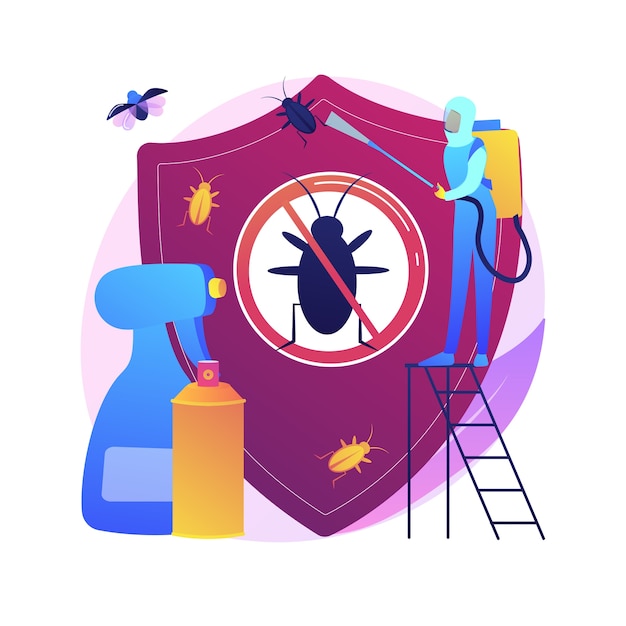
Bed bugs are tiny insects that feed on the blood of humans and animals. They spread and multiply quickly, making them a nuisance once they infest a space. People often mistake bed bug bites for other insect bites due to lack of awareness, but recognizing the signs of an infestation early can help you take effective steps to eliminate them.
### Signs of a Bed Bug Infestation
**Itchy, Red Bites**
Bed bug bites typically cause redness and itchiness on your skin. These pests hide during the day and come out at night to feed. When they bite, the affected area may become swollen and itchy, sometimes lasting all day. While bed bug bites don’t usually cause serious health issues, excessive scratching can lead to bleeding or infections that might require treatment.
**Marks on Exposed Skin**
Bed bugs tend to bite exposed areas of the body while you sleep, such as the arms and shoulders. If you notice bite marks in these areas, it could signify a bed bug problem. This is a key difference from other insects, like fleas or chiggers, which may bite around the ankles or concealed areas of your body.
**Trouble Sleeping**
A bed bug infestation can make it hard to sleep at night. Since they live in your bed and bite you while you’re lying down, their presence can lead to irritation, constant itching, and interrupted sleep.
**Musty Smell**
A strong, musty odor is another common sign of a bed bug infestation. Bed bugs release pheromones that smell unpleasant, especially when their numbers are high. People often equate this odor to that of wet, dirty clothing.
**Bugs on Clothing**
These pests can attach themselves to clothing and easily spread from one place to another. If you experience frequent itching or discomfort while wearing your clothes, check your wardrobe for any signs of bed bugs.
**Presence in Other Areas of the Room**
Bed bugs aren’t limited to your bed. They can hide anywhere in a room, such as cracks in walls, ceilings, chairs, carpets, or curtains. They’re small, reddish-brown insects that are often spotted in creases and corners. If you notice these bugs or experience itching and odors around your home, meticulously inspect your entire living space.
**Stains on Bedding and Furniture**
Bed bugs leave behind small black or reddish stains from their feces or blood. You might notice these stains on your bedding, furniture, or walls. These stains may smear when wiped, which is another indication of their presence.
Taking immediate action to address a bed bug problem is essential. Bed bugs can multiply rapidly, with even a single female producing numerous offspring. The sooner you act, the easier it will be to get rid of them and prevent further discomfort.
—
### Methods to Eliminate Bed Bugs
**Thorough Cleaning**
Since bed bugs are often found in mattresses and bedding, start by washing all bed linens, pillows, and covers in hot water. Sun-dry your mattress and pillows for several days to drive out any hidden bugs. Vacuum your bed frame and surrounding areas to remove bugs and their eggs. Remember to discard the vacuum contents far away from your home to avoid reinfestation. Additionally, applying pesticides to the cleaned areas can kill lingering pests. Regularly cleaning your bed and maintaining hygiene afterward can help prevent future infestations.
**Heat Treatment**
Bed bugs cannot survive in high heat. Washing fabrics in water heated to over 60°C can kill bed bugs at all life stages. This method is highly effective for clothing and fabrics.
**Cold Treatment**
Alternatively, bed bugs can be eliminated through extreme cold. Infested items should be kept at temperatures below -18°C (0°F) for at least four days. Small items can be placed in a freezer, but larger objects may require other solutions. Cooling your home for an extended period, such as keeping it unoccupied and ventilated for a year, can also eradicate bed bugs.
**Chemical Treatments**
Using pesticides specifically designed to kill bed bugs is another effective solution. These products are widely available, but make sure to choose EPA-approved pesticides for safety and effectiveness. It’s crucial to follow the instructions carefully, as improper use can be harmful. Certain chemicals like neem oil, diatomaceous earth, or insect growth regulators target and kill bed bugs effectively. However, foggers or bug bombs are not recommended, as they don’t reach the cracks where bed bugs hide and pose health risks to residents.
**Encasements**
Another preventive measure is mattress and box spring encasements. These zippered fabric covers trap bed bugs inside and prevent new bugs from entering. For the method to work, the encasements should remain sealed for at least a year.
**Professional Assistance**
If the infestation persists, it’s best to call an experienced pest control professional. Licensed experts conduct thorough inspections and provide tailored solutions to eradicate the bugs. They use a mix of chemical and non-chemical methods, ensuring both safety and effectiveness. Professionals also revisit homes for follow-up inspections and offer tips on preventing future infestations.
Bed bugs can be highly irritating and disruptive, making it essential to address them as soon as you notice signs of their presence. By taking preventative measures and using the methods described above, you can ensure a hygienic and bug-free home. Don’t delay in tackling an infestation—it’s the key to peaceful and uninterrupted sleep.